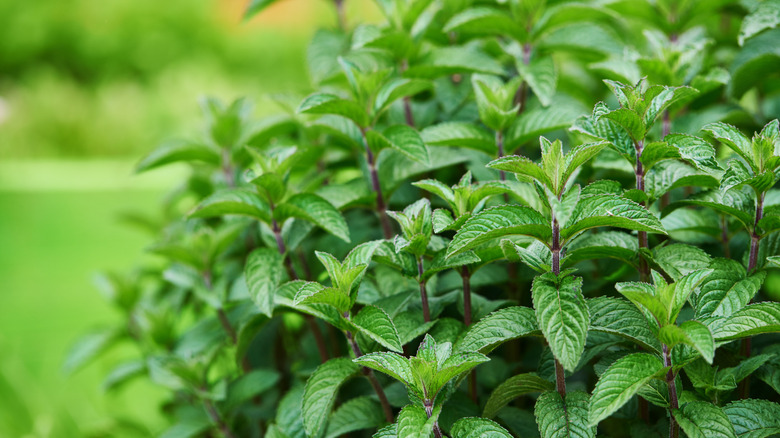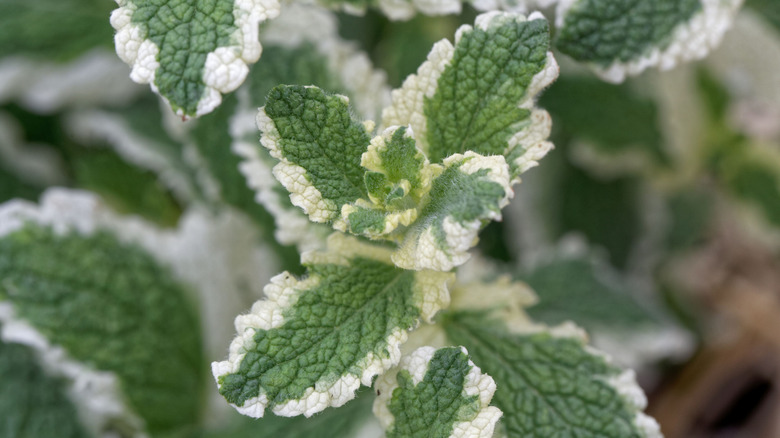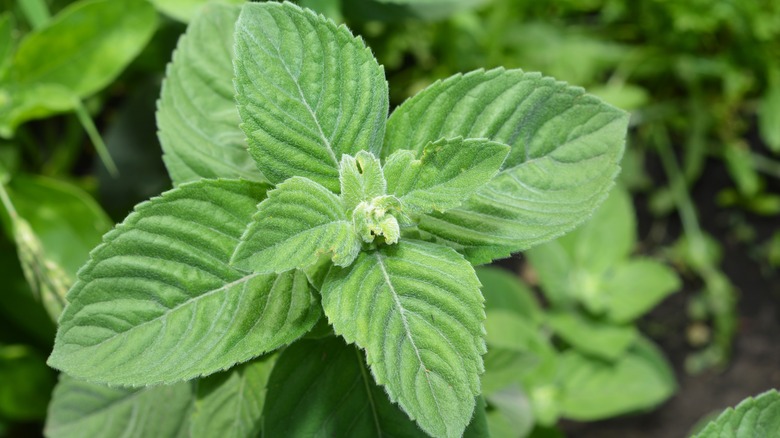Three Varieties Of Mint That Won't Try To Overrun Your Garden
Mint is a rewarding herb to plant in the garden because it's easy to grow, but unfortunately, given this plant's invasive tendencies, you can have too much of a good thing. Luckily, compared to the typical spearmint or peppermint types, there are three varieties of mint that don't grow as aggressively. These are pineapple mint, apple mint, and banana mint. They make for quirky, and less invasive, additions to your garden so you won't have to learn how to get rid of mint if it's taking over your garden.
Like apple mint, pineapple mint is grouped with the genus Mentha Sauveolens, but is a variety known as Variagata. On the other hand, banana mint is part of the genus Mentha Arvensis. Each one has leaves fragrant to the fruit they're named after, with a hint of the classic mint aroma you know and love. Although each variety has slightly different care requirements, their less invasive nature makes up for this because they can be grown among your other plants in a few different ways, unlike their traditional mint counterparts that have to be contained.
Caring for less invasive mint varieties
If you're wondering how to keep your mints plants happy and healthy, you'll want to be mindful of the apple, pineapple, and banana mint's slightly different climate and soil conditions, as well as hardiness zones. Pineapple mint grows best in full sun in cool climates and in shade in hotter climates. In hotter climates though, you want to be mindful of the sun potentially burning their leaves if they get too much exposure. Additionally, pineapple mint is sensitive to soil nutrient levels. The plant droops in soil that is over-fertilized, so planting in poorer soil conditions is recommended. Pineapple mint is hardy to USDA zones five to nine and zone four with protection from the sun.
Apple mint likes full sun to partial shade. Since apple mint doesn't tolerate dry soil, it's important to keep its soil moisture levels between medium and wet. Similar to pineapple mint, apple mint is also hardy in USDA zones five to nine. Lastly, banana mint also likes to be planted in full sun to partial shade, but unlike pineapple mint, plant it in rich, well-drained soil. This variety is hardy in USDA zones five to 11.
How to use less invasive mint varieties in the garden
While your first instinct may be to plant these unique mint varieties in an herb garden and call it a day, you actually have a lot more options to choose from. Mint varieties are often used in ornamental gardening. In fact, they can be added to a border as an accent plant, in a garden bed. Pineapple mint, in particular, has medium textured, variegated leaves so it pops when paired with fine or coarse textured plants with solid colored leaves.
Apple mint, on the other hand, presents its own unique use because it can be planted as part of a rain garden, due to its preference for wetter soil. Meanwhile, adorn your windows with baskets of banana mint or choose to plant any of these among plants that will grow well next to mint, like cabbage and roses. Whichever way you choose to grow these less invasive types of mint, you can enjoy the beauty and flavor of mint, without the constant fight to contain it.


